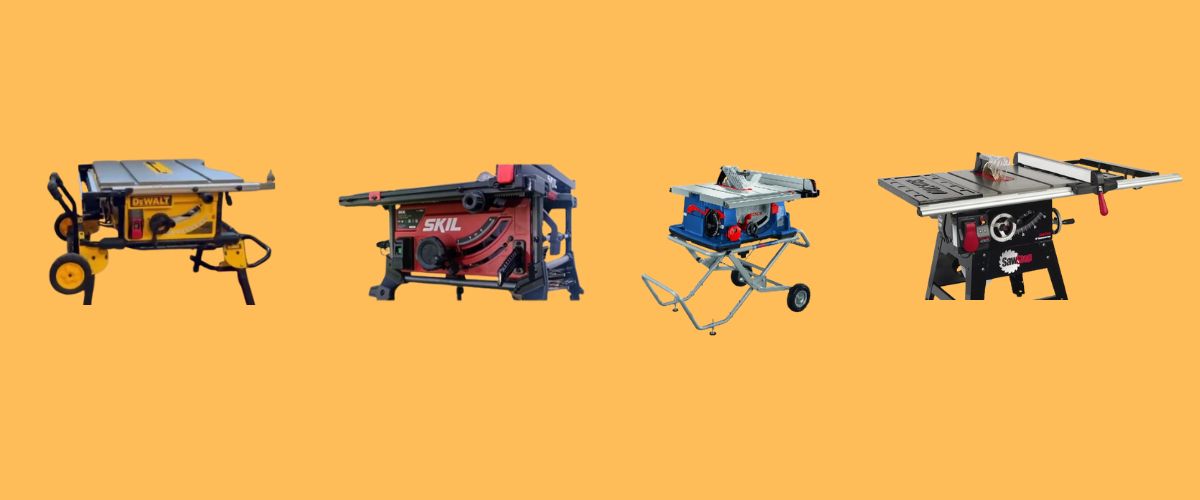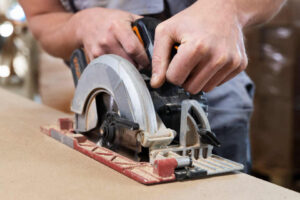Space is limited, so every inch of your bench matters. You still want the power and accuracy to handle serious woodworking projects. That’s where choosing the right table saw becomes crucial. Go too big, and you’ll feel cramped; pick the wrong model, and crooked cuts, misaligned fences, and even safety hazards can ruin both your work and your confidence.
In a small shop, you need a saw that balances portability, rip capacity, and precision without overwhelming your space. You want something reliable, easy to adjust, and capable of handling plywood sheets, hardwood boards, and occasional DIY projects without fuss. This guide isn’t about fancy features you’ll never use—it’s about real, dependable table saws that fit in tight workshops while still giving professional-level results.
Whether you’re a hobbyist aiming to optimize a garage setup or a small business woodworker seeking compact yet capable equipment, we’ve tested and compared models that provide exactly that. By the end of this article, you’ll know which table saw fits your shop, your projects, and your budget—without compromising quality or safety.
Table of Contents
Why the Right Table Saw Matters in a Small Shop
You know that moment when you’re about to cut a board, and your old saw wobbles, the fence isn’t straight, or the blade struggles through thick hardwood? Frustration hits fast. Projects take longer, edges come out crooked, and that “quick weekend build” suddenly feels like a full-time job.
In a small shop, these problems are amplified—there’s no room for bulky, unstable machines, and mistakes waste both space and material. That’s why finding the right table saw isn’t just about buying a tool; it’s about saving time, reducing stress, and actually enjoying the process of building something solid.
Our Top Picks
1. Overall Best– DEWALT DWE7491RS
2. Best Budget– DEWALT DW745
3. Best for Small Shop– SKIL TS6307-00
4. Best Precision– Bosch 4100XC-10
5. Best Safety– SawStop Contractor Saw
Quick Comparison
| Model | Motor | Rip Capacity | Weight |
| DEWALT DWE7491RS | 15 Amp | 32.5 in | 110 lbs |
| DeWalt DW745 | 15 Amp | 20 in | 45 lbs |
| SKIL TS6307-00 | 15 Amp | 25.5 in | 51 lbs |
| Bosch 4100XC-10 | 15 Amp | 30 in | 94 lbs |
| SawStop Contractor Saw | 1.75 HP (13 Amp equivalent) | 30 in | 225 lbs |
Best table saws for a small shop you can buy
DEWALT DWE7491RS
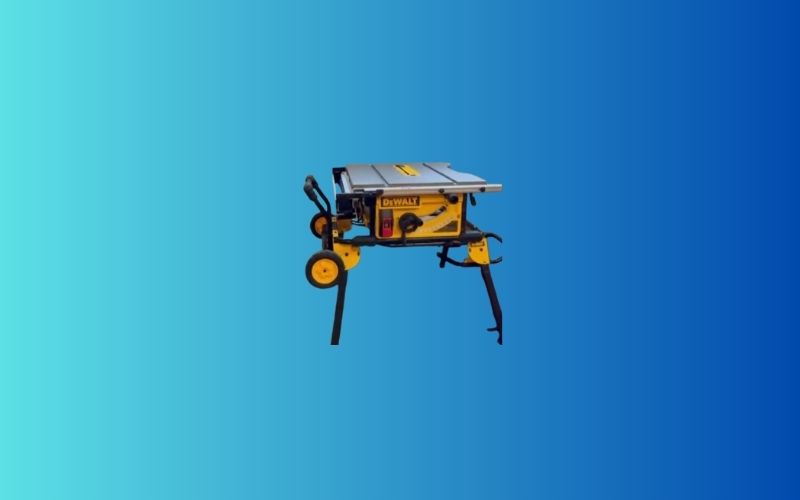
The DEWALT DWE7491RS is one of the best table saws for small shop owners and DIY enthusiasts who need a combination of power, precision, and portability. Its 15-amp motor delivers smooth, consistent cutting performance through both softwoods and hardwoods, making it ideal for a variety of woodworking projects. With a generous 32.5-inch rip capacity, this saw can handle large plywood sheets and wide boards without overcrowding your workspace.
The rolling stand enhances mobility, allowing you to easily move the saw around your shop or store it compactly when not in use.
Additionally, the rack and pinion fence system ensures accurate and repeatable cuts every time, while the robust build provides stability and durability for long-term use. Whether you’re tackling cabinetry, furniture, or general DIY projects, the DWE7491RS combines professional-level performance with small-shop convenience.
See our review of DeWalt DWE7491RS
DeWalt DW745
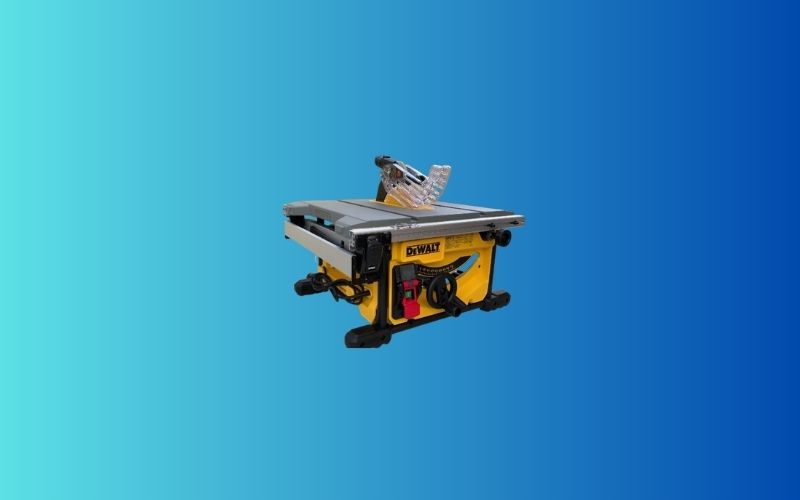
The DeWalt DW745 is a compact, lightweight, and highly portable table saw designed specifically for small shops, tight workspaces, and hobbyist woodworkers. Despite its smaller size, its 15-amp motor delivers reliable power capable of handling a wide range of woodworking tasks, from ripping plywood sheets to cutting hardwood boards.
The saw’s portable design allows for easy movement and storage, making it perfect for garages or workshops with limited space. Its durable construction ensures stability during cutting, while the precision-machined table and adjustable fence system provide accurate, clean cuts every time.
The DW745 strikes an excellent balance between performance and convenience, making it a trusted choice for DIY enthusiasts and small shop users who need a dependable, easy-to-use saw without compromising on cutting quality.
See our review of DeWalt DW745
SKIL TS6307-00
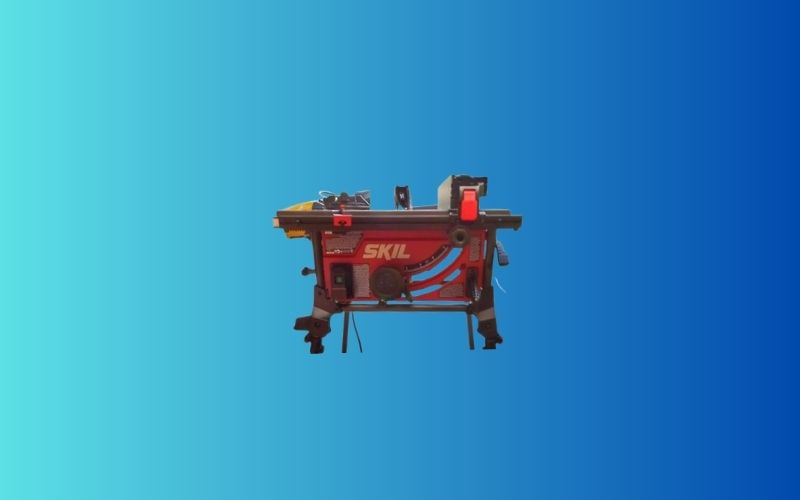
The SKIL TS6307-00 is a compact yet surprisingly powerful table saw, designed to fit perfectly in small shops or tight workspaces where every inch counts. Despite its smaller footprint, it offers reliable cutting performance and excellent precision, making it suitable for a wide range of woodworking projects. Its 15-amp motor ensures smooth cutting through plywood, softwoods, and hardwoods, while the lightweight design allows for easy repositioning and storage.
The saw is built with durability in mind and provides consistent, accurate cuts, making it an ideal choice for hobbyists, DIY enthusiasts, and small shop owners who value both precision and convenience.
See our review of SKIL TS6307-00
Bosch 4100XC-10
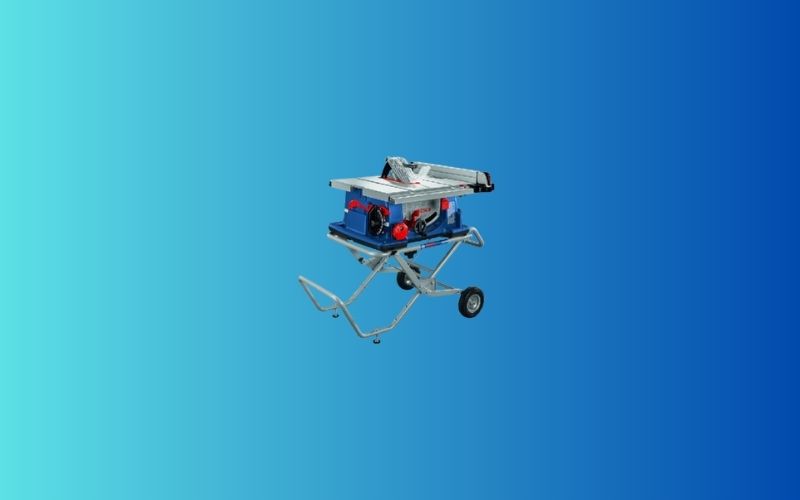
The Bosch 4100XC-10 is a versatile table saw that balances portability with professional-level performance. Its 15-amp motor easily handles small to mid-sized projects, while the gravity-rise stand allows for quick setup, storage, and easy movement around your workshop. With precise cutting capability, reliable safety features, and a durable design, this saw is ideal for small shop owners who need both accuracy and mobility for various woodworking tasks.
SPECIFICATIONS
| Motor | 15 Amp |
| Blade Size | 10-inch |
| Rip Capacity | 30″ right / 8.5″ left |
| No-Load Speed | 3,650 RPM |
| Weight | 94 lbs |
| Dust Collection | 2.5 in port |
| Stand | Gravity-Rise wheeled stand |
SawStop Contractor Saw
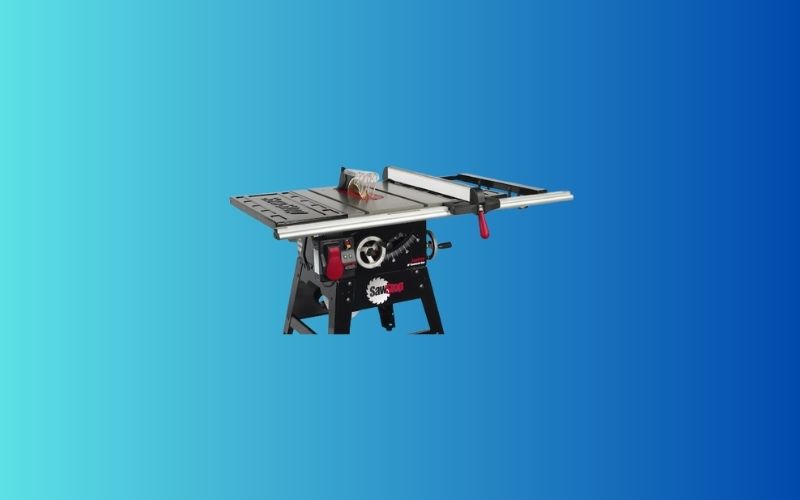
The SawStop Contractor Saw offers unmatched safety and professional-level performance for small shops. Equipped with a 1.75 HP motor (120 V model) and a 30-inch rip capacity, it handles large panels and hardwood effortlessly. Its patented safety system stops the blade on skin contact, providing superior protection. Built for stability, precision, and long-term durability, this saw is perfect for serious woodworking projects where safety and accuracy are top priorities.
SPECIFICATIONS
| Motor | 1.75 HP (13 Amp equivalent) |
| Blade Size | 10-inch |
| Rip Capacity | 30″ right / 12″ left |
| No-Load Speed | 3,450 RPM |
| Weight | 225 lbs |
| Dust Collection | 4 in port |
| Stand | Fixed contractor-style table |
When Choosing Table Saws for Small Shops
When I’m choosing a table saw for my small shop, several factors come into play. It’s not just about finding a powerful saw—it’s about finding one that fits my space, handles my projects, and keeps me safe while working. Over time, I’ve learned to focus on a few key points that make all the difference.
Motor and Power
The motor determines how easily the saw cuts through different types of wood. For a small shop, I usually look for a 15-amp motor running on a standard 120V circuit. It’s strong enough to handle hardwoods, plywood, and most DIY projects without overloading. Some saws offer higher horsepower on 240V circuits, which can handle thicker stock, but they’re heavier and take up more space. For me, balancing power with portability is essential in a compact shop.
Space Efficiency and Portability
Space is always tight in a small workshop. I prefer table saws with a compact footprint—around 28–30 inches in length and width—so I can still move around comfortably. Portability is another priority. Lightweight saws under 75–100 pounds, with foldable stands or integrated wheels, make setup and storage quick and easy. In a small shop, being able to move your saw without hassle makes a huge difference in workflow efficiency.
Cutting Capacity
Even in a small shop, cutting capacity matters. I always check the maximum rip width and depth of cut. Ideally, I look for a saw with at least 24–32 inches of rip capacity, enough to handle plywood sheets and larger stock. Bevel cutting from 0 to 45 degrees is another useful feature, allowing angled cuts without extra tools. Blade quality is equally important. Carbide-tipped blades offer smooth cuts, while diamond-tipped blades can handle tougher materials but at a higher cost. Matching the blade to the wood type and project is something I never overlook.
Safety Features
Safety is non-negotiable, especially in confined spaces. I always look for a saw with a riving knife, anti-kickback pawls, blade guards, and anti-restart switches. Overload protection is also essential to prevent motor damage and reduce the risk of accidents. A well-designed saw with these features gives me confidence, especially when I’m working alone in a small shop.
Dust Collection
Dust can accumulate quickly in small workshops, affecting both health and visibility. I prefer saws with dedicated dust ports or built-in dust collection systems. Connecting the saw to a vacuum or dust collector keeps the workspace clean and reduces inhalation of sawdust. Some models even have removable dust bags or easy-empty designs, which make maintenance simple and fast. A clean workspace is safer and allows me to focus on precise cuts.
Budget and Value
Lastly, budget plays a big role in my choice. In a small shop, I look for saws that balance cost with essential features. Many reliable models under $500 come with good motors, safety features, and decent cutting capacity.
Recommended: Best table saws under $500
I also consider long-term value: ease of finding replacement blades, warranty periods, and available accessories.
Checking user reviews and experiences helps me avoid models that underperform or are unreliable. A well-chosen saw gives me excellent results without overspending.
FAQs
What safety features should I look for in a table saw?
When selecting a table saw for a small shop, safety is crucial. Look for features such as blade guards, riving knives, push sticks, and anti-kickback pawls. Some models also offer emergency stop buttons or soft-start motors that prevent accidental start-ups. These features help reduce the risk of injuries and make working with the saw much safer.
How do I maintain my table saw for longevity?
Regular maintenance keeps your table saw performing efficiently. Clean the table surface and blade after each use, lubricate moving parts, and check the alignment of the fence and miter gauge. Inspect blades for sharpness and replace them when needed. Following these steps prevents wear, ensures smooth cuts, and extends the life of your table saw.
Can I use a table saw for materials other than wood?
Yes, many table saws can cut materials like plywood, MDF, composite boards, and even some plastics. Always use the correct blade for the material and adjust the cutting settings accordingly. Using the right blade ensures clean, precise cuts without damaging the saw or the material.
What is the ideal blade size for different woodworking projects?
For most small shop projects, a 10-inch blade works best for ripping and cross-cutting. Smaller blades (7¼″) suit light or precision work, while 12″ blades are for heavy-duty or professional tasks.
How do I choose the right fence system for my table saw?
Choose a sturdy, easy-to-adjust fence like a rack-and-pinion system. It keeps cuts precise, prevents drift, and ensures safer, smoother woodworking.
How important is dust collection for a small shop table saw?
For a small shop, always connect your table saw’s dust port to a quality vacuum or dust extractor, use a blade guard or hood, and clean sawdust regularly. Proper setup keeps your workspace safer, healthier, and ensures precise cuts.
Final Thoughts
In a small workshop, every inch counts—choosing the right table saw ensures precision, safety, and efficiency without crowding your space. From budget-friendly models like the SKIL TS6307-00 to professional-grade options such as the SawStop Contractor Saw, there’s a saw to fit every shop size, skill level, and budget.
Investing in a compact, reliable table saw saves time, reduces frustration, and guarantees clean, accurate cuts. By prioritizing motor power, cutting capacity, safety features, and portability, you can create a small shop setup that’s both productive and enjoyable.
With the right saw, even a tight workspace can deliver professional-level results—making every cut smoother, every project faster, and every build more satisfying.

Welcome to Homenias, I’m Jaman M, and I’m here to help you discover the best home products. With years of experience, they offer genuine reviews and helpful guides. Their mission is to make your choices easier. It’s organizing your space or finding creative solutions. Explore how the right products can enhance your everyday life. Don’t miss out on finding the best home products to raise your living experience.

